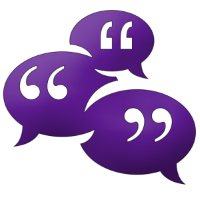Human-Kind. Isn’t that lovely. We have moved away from the patriarchal term mankind – ‘man’ who has not always been ‘kind’, necessarily – toward equality between the sexes and acknowledging gender fluidity. Noah touches on this. If you’re interested in the evolution of humanity and how we are capable of co-operating as a global community, give this book a go. You may experience information overload – but when condensing 2.4 million years into less than 500 pages, Harari goes alright. I’m someone who didn’t pay attention to history at school so I found this book enlightening, empowering and also disheartening at times. Harari writes about the breakthroughs of the Cognitive, Agricultural and Scientific Revolutions. The power of human imagination, math and language has been instrumental in the development of humankind into an apex predator, and the destruction of everything else.
Sapiens: A Brief History of Humankind.
Related Post
Polyvagal Theory and Trauma – Dr. Stephen PorgesPolyvagal Theory and Trauma – Dr. Stephen Porges

Stephen Porges, psychiatry professor and researcher, on the polyvagal theory he developed to understand our reactions to trauma:
[Paraphrased] Polyvagal theory articulates three branches of the autonomic nervous system (ANS) that evolved from primitive vertebrates to mammals. First, there is a system known as ‘freeze’, which involves death feigning or immobilisation. Second, the ANS has a ‘fight or flight’ system, which is a mobilisation system. And third, with mammals, there is what Porges calls, a social engagement system (SES), which can detect features of safety, and actually communicate them to another. The SES may also be referred to by some as ‘rest and digest’, which Porges theory suggests is a function of the Vagus Nerve – the tenth cranial nerve, a very long and wandering nerve that begins at the medulla oblongata. When an individual experiences feelings of safety (within an SES state), the autonomic nervous system can support health restoration. In terms of dealing with a life threat, an ordinary person will most likely go into a feigning death, dissociative state of ‘freeze’.
Polyvagal theory in psychotherapy offers emotional co-regulation as an interactive process between therapist and client which engages the social engagement system of both therapist and client. Social engagement provides experiences of safety, trust, mutuality and reciprocity in which we are open to receiving another person, just as they are.
The following extract has been retrived from https://www.theguardian.com/society/2019/jun/02/stephen-porges-interview-survivors-are-blamed-polyvagal-theory-fight-flight-psychiatry-ace
Polyvagal theory has made inroads into medical and psycho-therapeutic treatment, but how should it inform how people treat each other?
“When we become a polyvagal-informed society, we’re functionally capable of listening to and witnessing other people’s experiences, we don’t evaluate them. Listening is part of co-regulation: we become connected to others and this is what I call our biological imperative. So when you become polyvagal-informed you have a better understanding of your evolutionary heritage as a mammal. We become aware of how our physiological state is manifested, in people’s voices and in their facial expression, posture and basic muscle tone. If there’s exuberance coming from the upper part of a person’s face, and their voice has intonation modulation or what’s called prosody, we become attracted to the person. We like to talk to them – it’s part of our co-regulation.
So when we become polyvagal-informed, we start understanding not only the other person’s response but also our responsibility to smile and have inflection in our voice, to help the person we’re talking to help their body feel safe.”
Clink on the link below to hear Dr. Bessel van der Kolk, one of the world’s leading experts on developmental trauma, explain how our long-term health and happiness can be compromised by prior exposure to violence, emotional abuse, and other forms of traumatic stress.
What does human development mean to you? How often are we thinking about our own development? Here is a start (“,)What does human development mean to you? How often are we thinking about our own development? Here is a start (“,)
Hello readers. I hope you are well. I imagine some of you are struggling and some of you are flourishing. Life consists of both. As humans, we relish pleasurable feelings and experiences and we tend to dislike uncomfortable emotions and experiences. I get it. I am just like you. We share this. I hope that provides some comfort.
What is human development?
Human development can be described as “systematic changes and continuities in the individual that occur between conception and death, or from “womb to tomb”” (Sigelman, De George, Cunial, & Rider, 2019, p. 3).
Human development involves the continuities (i.e., what remains consistent across time) and the systematic changes (i.e., patterns of change that are expected to come in order across time) that one experiences throughout the lifespan. Based on my education, there are three domains of continuity and change: 1. The physical and biological, 2. Cognitive (i.e., mind processes/thinking), and 3. Psychosocial and emotional. Let’s open these one at a time.
Physical development includes:
- Physical and biological processes (e.g., genetic inheritance).
- Growth of the body and its organs.
- Functioning of physiological systems (e.g., brain).
- Health and wellness.
- Physical signs of ageing and changes in motor abilities.
Cognitive development includes:
Perception: the sensing of stimuli in our environment (internal and external), sending that information to the brain to be identified and interpreted in order to represent and understand our experience of the world and give it meaning. All perception involves signals that go through the nervous system.
Attention: the ability to actively (and often, involuntarily) process specific information in the environment while tuning out other details. Attention is a very interesting cognitive process because when we bring mindfulness to our thoughts we become open to the direction and attention of our mind. Remember this: where attention goes, energy flows.
Language: very broadly, Language is a communication system that involves using words (i.e., sounds arranged together) and systematic rules to organise those words into sentences and meaning, to transmit information from one individual to another. I was never very interested in language when I was studying at university however that has changed. We used language and concepts to talk to ourselves, about other people, and it is open to misinterpretation, error, and oftentimes language can be used as a means to hurt people or … bring us closer together.
Learning: very broadly defined as a relatively permanent change in behaviour, thinking, and understanding as a result of experience. Experience is everything from formal education to unique personal experience. We learn from each other, the world around us, books, movies, self-reflection and education etc. All of which are experiences.
Memory: Memory refers to the processes that are used to gather, organise, store, retain, and later retrieve information. I’m sure you’ve all seen a tv show or read a book about a person with Amnesia or Alzheimer’s disease. Imagine what your life would be like if you didn’t have the function of memory. I wouldn’t be able to type this very well, I don’t think. I wouldn’t remember my loved ones or what was dangerous in my environment. I know we all have unpleasant memories too and that may feel like a negative evolutionary by-product – however it is actually designed to protect us. Memory is finite – we actually forget a lot of stuff, or perhaps more accurately, we do not have the capacity to store and recall everything we experience.
Intelligence: I would like to reframe intelligence from what might be a common belief. Intelligence does not mean academically gifted as is considered valuable in Western society. I think Olympians and caregivers/parents have an intelligence that I do not because I haven’t learned their skills. Intelligence involves the ability to learn (i.e., sport, academics, the arts, swimming, survival, interpersonal skills), emotional knowledge, creativity, and adaptation to meet the demands of the environment effectively
Creativity: I consider creativity to be an evolutionary gift of our imagination, providing humans with the ability to generate and recognize ideas, consider alternatives, think of possibilities that may be useful in solving problems, communicating with others, and entertaining ourselves and others. Creativity can be stunted when we are struggling or caught in reactivity to external pressures or perceived stress.
Problem solving: is a process – yes, a cognitive one but also a behavioural process. It is the act of defining a problem; determining the cause of the problem; identifying, prioritizing, and selecting alternatives for a solution; and implementing a solution. Problem solving can be both creative or stress driven. I like to say whenever I am solving a problem I am also making a decision. A decision of mine is a choice. At university, our problem solving lessons were coincided with decision making which is why I think of it that way.
Psychosocial development involves:
Aspects of the self (i.e., your identity – which may change over time), and social and interpersonal interactions which include motives, emotions, personality traits, morality, social skills, and relationships, and roles played in the family and in the larger society. This is a huge area to be explored. I will endeavour to elaborate on our psychosocial development in later blogs.
In the late 1950’s, a German-American developmental psychologist named Erik Erikson created a theory for human psychosocial development across the lifespan. His theory suggests that human personality develops in a predetermined order through 8 stages of psychosocial development. See the table below:
| Age or Stage | Conflict | Example | Resolution or “virtue” | Key Question to be answered |
| Infancy (0 to 18 months) | Trust vs. Mistrust | Being feed and cared for by caregiver. | Hope | Is my world safe? Will I be cared for? |
| Early Childhood (2 to 3 years) | Autonomy (personal control) vs. Shame and Doubt | Toilet training and getting dressed. | Will I would add self-efficacy here too. | Can I do things for myself, or will I always rely on others? |
| Preschool (3 to 5 years) | Initiative vs. Guilt | Interacting with other children and asserting themselves in their environment e.g., during play. | Purpose Taking initiative, leading others, asserting ideas produces a sense of purpose. | Am I liked by others or do I experience disapproval by others? |
| School Age (6 to 11 years) | Industry (competence) vs. Inferiority | Starting formal education and participating in activities. | Competence | How can I do well and be accepted by others? |
| Adolescence (12 to 18 years) | Identity vs. Role Confusion (uncertainty of self and role in society) | Developing social relationships with peers and sense of identity. | Fidelity (loyalty) The ability to maintain loyalty to others based on accepting others despite differences. | Who am I and where am I going in my life? What are my personal beliefs, values and goals? |
| Young Adult (19 to 40 years) | Intimacy vs. Isolation | Developing intimate relationships. | Love | Am I loved and desired by another? Will I be loved long-term? |
| Mature Adult (40 to 65 years) | Generativity vs. Stagnation | Vocation and parenting, typically. | Care Contributing to the world to demonstrate that you care. | Will I provide something to this world of real value? E.g., children or valuable work, art, a legacy etc. |
| Maturity (65 year to death) | Ego Identity vs. Despair | Reflection of your life. Feelings of satisfaction and wholeness. | Wisdom | Was I productive with my life? Can I accept my life and have a sense of closure and completeness? |

